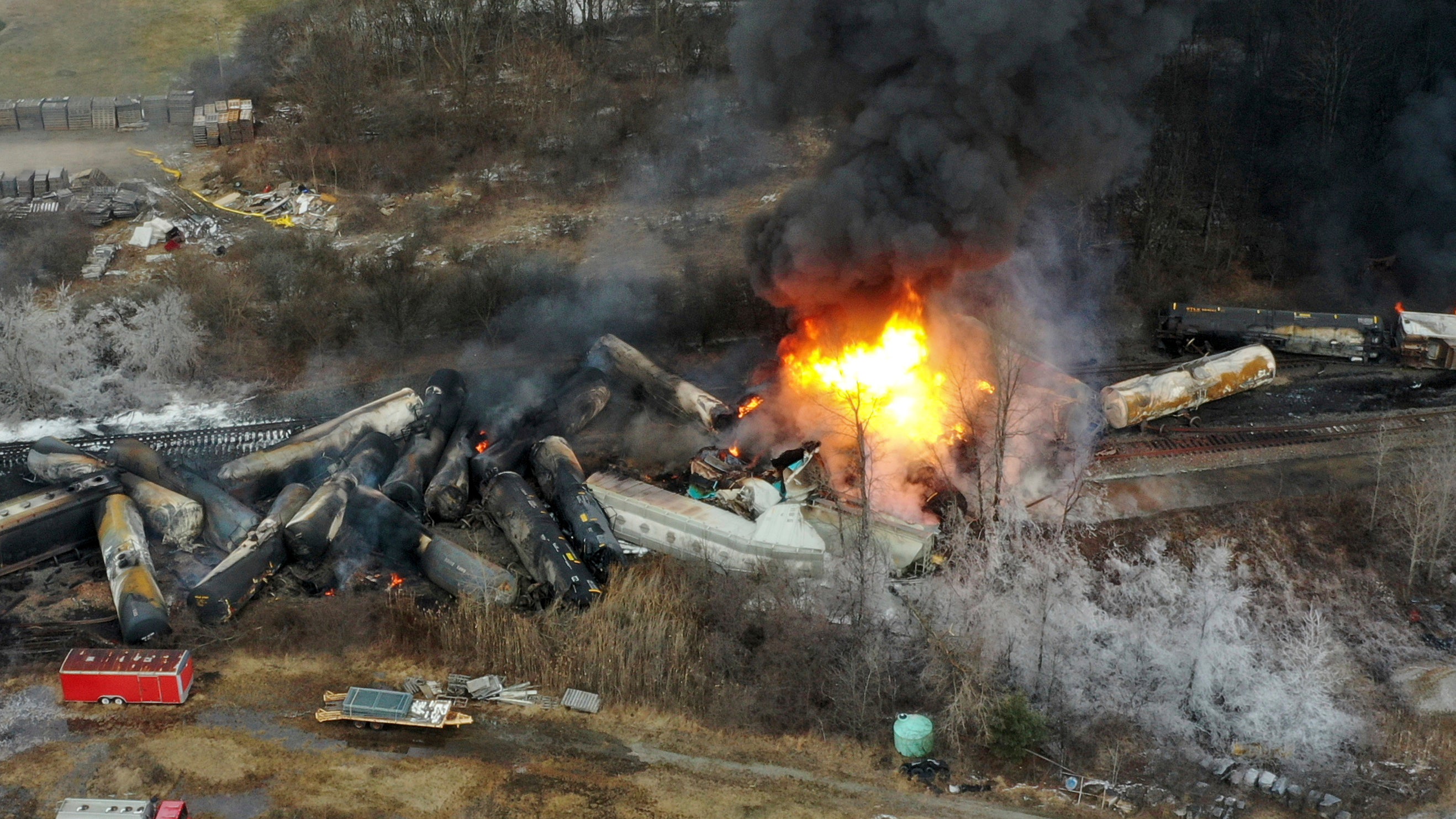Railroads work to make sure firefighters can quickly look up what is on a train after a derailment
The railroad industry is trying to make sure that emergency responders can quickly look up what is on a train quickly when they respond to a derailment

In the chaos after a Norfolk Southern train careened off the tracks and caught fire in eastern Ohio in February, it took roughly 45 minutes for firefighters to learn exactly which chemicals were involved.
Now the railroad industry is trying to ensure that never happens again.
Ever since that Feb. 3 derailment prompted concerns about rail safety nationwide, the major railroads have redoubled their efforts to make sure that more and more first responders can immediately look up the contents of any freight train.
This week, the two counties that handled the initial response to the East Palestine, Ohio, derailment on the Ohio-Pennsylvania border were set up with the AskRail program that will allow dispatchers to look up everything a train is carrying as soon as they get one car number. That is part of an effort the Association of American Railroads trade group launched this spring to sign up emergency dispatch centers in the program.
“It’s going to allow us to make better, more informed decisions quicker -- not only for the responders but for the community,” said Eric Brewer, director of emergency services in Beaver County, Pennsylvania.
Previously, first responders would have to either track down the train crew to get a copy of the train's contents or reach out to the railroad directly — both of which can take precious time.
Knowing which hazardous materials are on a train is key to helping firefighters decide how to respond and whether evacuations are needed. For some chemicals, specialized firefighting foam may be needed instead of water and in some cases, as in East Palestine, the chemicals can make it too dangerous for firefighters to attack a blaze directly. That night, firefighters had to pull back and contain the blaze while the chemicals continued to burn.
The railroads worked with emergency responders to develop the AskRail app in 2014 that firefighters could download to their phones or the computers mounted within their fire trucks. By the end of last year, only about 40,000 users had signed up, though some of those were individual firefighters and some were department computers available to multiple responders.
Then this year, the industry began working to get the program set up in dispatch centers. So far, 42 of them nationwide have joined and another 37 are in the process of joining. Railroads expect that number to grow quickly as word spreads.
But the railroads also had the idea to make their train consist information, which provides details about all the cargo on a train, available through the chemical industry's hotlines that firefighters can call to get advice on how to deal with specific chemicals. So now any time a firefighter with hazardous materials training calls either the Chemtrec hotline in the United States or the similar Canutec hotline in Canada they can find out what is on a train as long as they have a car number.
That move made the AskRail information available to about 2.3 million firefighters with hazardous materials training.
Railroads are trying to ensure the information is available in multiple places to reduce the chances that firefighters will struggle to find out what is on a train after a derailment. Even though the app itself has been available for years, not every firefighter knew about it, and volunteer fire departments account for nearly 82% of all firefighters nationwide.
“We’re trying to create redundancies in the system to make sure the information is available,” said Jessica Kahanek, a spokeswoman for the main rail trade group.
Norfolk Southern announced Wednesday that in addition to the industrywide efforts to expand AskRail access, it is working with the makers of the RapidSOS software that more than 15,000 emergency response agencies already use to make its train consist information available within that program.
If that effort succeeds across the Atlanta-based railroad's 22-state network in the East, the other major railroads could follow. The railroad said it expects to have its train data available within the RapidSOS program early next year.
“Our partnership with Norfolk Southern will provide first responder agencies with advanced situational awareness to best respond in the event of a train emergency,” said Jose Mejia, chief operating officer at RapidSOS. “We are thrilled to collaborate with Norfolk Southern to provide this data to support public safety to aid in keeping communities prepared and safe.”
Federal regulators have also proposed requiring railroads to quickly notify every emergency responder within 10 miles of a derailment as soon as a railroad becomes aware of an accident.
The Association of American Railroads emphasizes that railroads remain the safest way to ship dangerous chemicals by land, with more than 99 percent of those shipments arriving safety.
But even one derailment involving hazardous materials can prove disastrous, and last year there were more than 1,000 derailments — roughly three a day. More than three quarters happened at slow speeds in railyards, without causing major damage.